
The Origins of American Sign Language in the United States
- by Katelyn Cheng
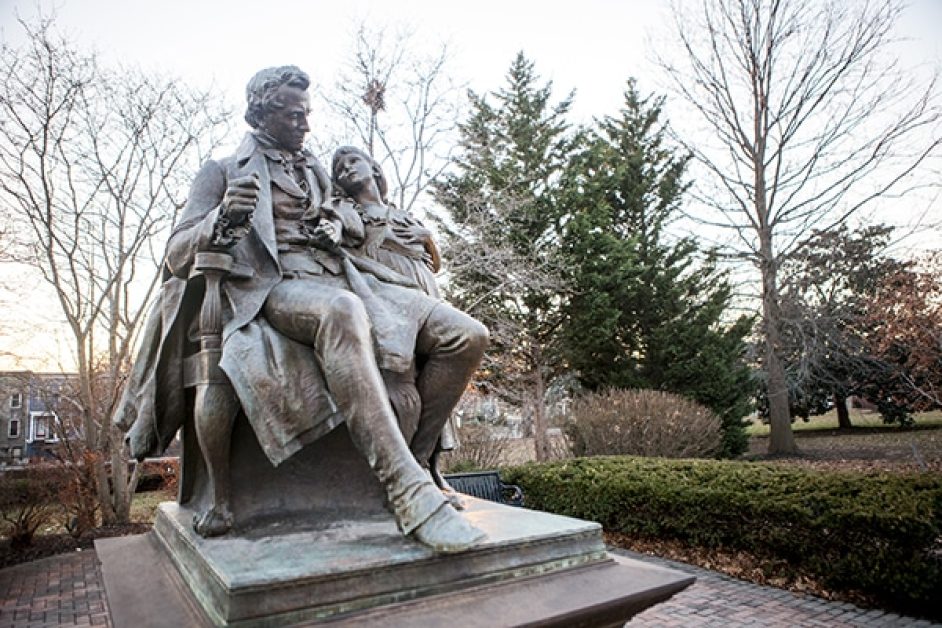
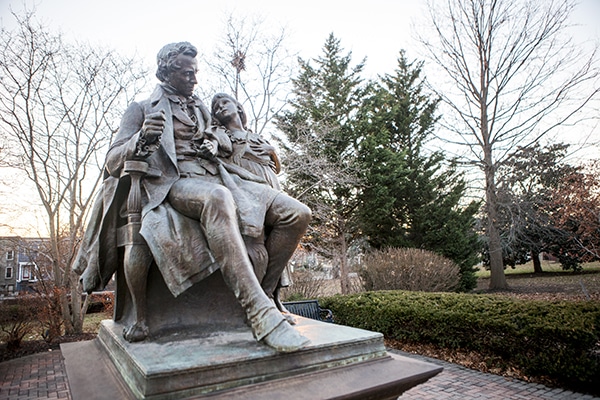
There are many Deaf actors and movies that have American Sign Language. Not only are Deaf people have a successful career in acting. Deaf people are successful in other ways not just in the media industry. There are several Deaf people and hearing people who have supported the Deaf community that have made Deaf history. In this article, I will focus on the history and establishment of American Sign Language and of Deaf schools in the United States: Thomas Hopkins Gallaudet, Alice Cogswell, and Laurent Clerc. Read below to learn who they are and how they made an impact.
Alice Cogswell – Alice was one of the most symbolic influencer in Deaf history. She was born on August 21, 1805 in Connecticut. When she was 2 years old, she got sick with a type of meningitis known as “spotted fever”. As a result, she become profoundly deaf and eventually lost her ability to speak. Alice was very smart and she enjoyed numerous hobbies such as sewing and dancing. Alice had brothers and sisters whom most of them did not talk to Alice cause she could not speak yet. Her father, Mason Fitch Cogswell, was one of the first surgeons to remove cataracts from the eyes. He was neighbors with Thomas Hopkins Gallaudet, who was the other symbolic influencer that changed education for Deaf people in Deaf history. When Alice was 9 years old, she met Gallaudet. Alice was sitting outside and watching her brothers and sisters play. During Galladuet’s family visit in Connecticut, he noticed that Alice was sitting alone and not playing with the other kids. He asked one of the siblings about Alice. The child told Gallaudet that the girl sitting by herself is named Alice and she is deaf. That is when Gallaudet approached Alice and met her for the first time.
Alice inspired him to devote his life to educating the deaf. Gallaudet observed that Alice was very smart despite her hearing loss and inability to speak, he wanted to teach Alice how to communicate. Gallaudet attempted to communicate with Alice by pointing to his hat and writing H-A-T in the dirt. Alice was having some success learning how to spell and read from Gallaudet. However, Gallaudet didn’t know the most effective way of educating a deaf child. He and Alice’s father knew a formal school would be the best option for her, but a school for the deaf did not exist in the United States. Gallaudet then traveled to Europe to learn the most successful methods used to teach deaf children. He brought back with him Laurent Clerc, a deaf educator who taught using French Sign Language. Together, they established the American Asylum for Deaf-Mutes in 1817, which is now known as the American School for the Deaf. Alice was the first to enroll in this history-making school. Alice died in 1830 at the age of twenty-five, just thirteen days after her father died. Alice was one of the best students. She wrote many papers on religious topics. Alice learned to sign more and more, she was able to communicate easily with her deaf peers and teachers. Alice was fascinated on how music worked and she loved to dance at her parents’ parties. As Alice got older she was able to speak a few words, one of the words was “PRETTY”. Alice took advantage to travel to many places after she graduated from American School for the Deaf in 1824. When Alice was 25, her father Mason Cogswell died on December 10, 1830. Shortly after her father died, Alice suffered from delirium and passed away on December 30, 1830. Today, a gorgeous statue of Gallaudet and Alice stands at both the American School for the Deaf and Gallaudet University.
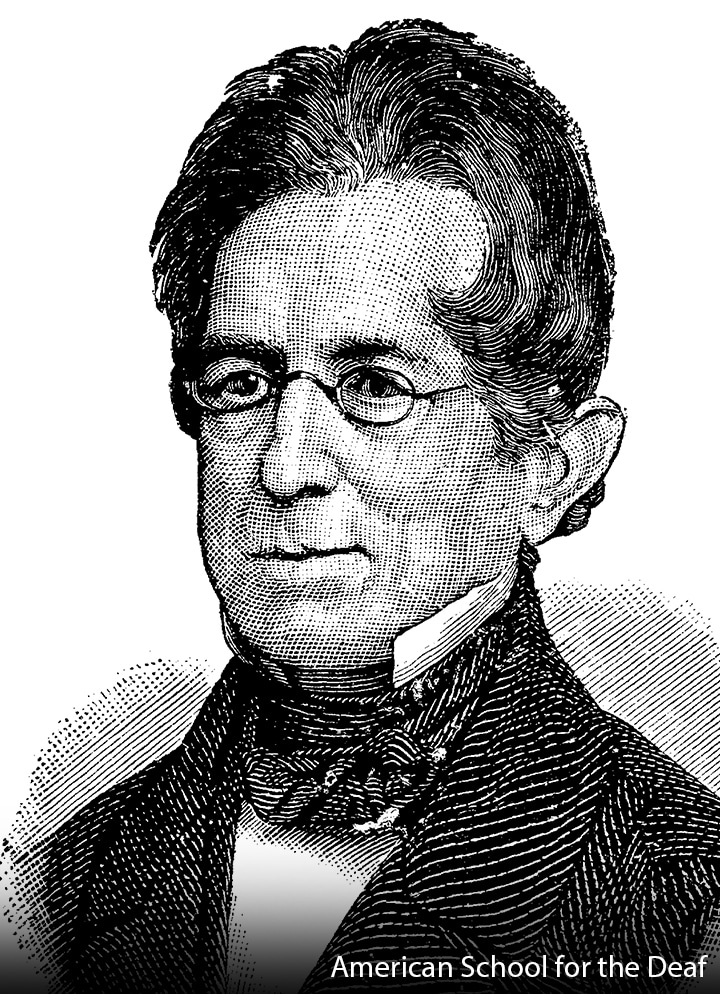 Thomas Hopkins Gallaudet – Thomas Gallaudet, who was hearing, was born on December 10, 1787 in Philadelphia. His family moved to Hartford, Connecticut, the home of his maternal grandparents and where Galladuet attended grammar school. As a young boy, Gallaudet was very bright and intelligent. He attended Yale University in 1802 when he was 15 years old. He was the youngest student to graduate with honors three years later. He tried his hand at law, teaching, and business, but finally decided on the ministry. He attended Andover Theological Seminary from 1811 to 1814.
Thomas Hopkins Gallaudet – Thomas Gallaudet, who was hearing, was born on December 10, 1787 in Philadelphia. His family moved to Hartford, Connecticut, the home of his maternal grandparents and where Galladuet attended grammar school. As a young boy, Gallaudet was very bright and intelligent. He attended Yale University in 1802 when he was 15 years old. He was the youngest student to graduate with honors three years later. He tried his hand at law, teaching, and business, but finally decided on the ministry. He attended Andover Theological Seminary from 1811 to 1814.
While Gallaudet was visiting his family in Connecticut, he encountered and met Alice Cogswell who became profoundly deaf from an illness. Alice’s father, Mason Cogswell and Gallaudet believed Alice should attend a formal school with proper education for the deaf, but no deaf school existed in the United States. Gallaudet’s goal to serve as an itinerant preacher was put on hold and he was more motivated to find the proper education for Alice. In 1815, Cogswell asked Gallaudet if he can travel to Europe to study methods for teaching deaf students, especially those of the Braidwood family in England; however the Braidwoods was conservative to share knowledge of their oral communication method. Gallaudet was also not satisfied that the oral method produced desirable results. During Gallaudet’s attendance at an event in Great Britain, he met the Abbe Sicard, head of the Institut Royal des Sourds-Muets in Paris, and two of its deaf faculty members, Laurent Clerc and Jean Massieu. In 1755, a French guy named Abbe Charles-Michel de I’Epee founded the first deaf institute in Paris, whom Sicard invited Gallaudet to Paris to study the school’s method of teaching deaf students using manual communication. Gallaudet studied teaching methodology under Sicard, learning sign language from Massieu and Clerc, who were both highly educated graduates of the school.
In 1816, Gallaudet and Clerc returned to the United States, Gallaudet began seeking financial support for a school for the deaf and mute, which had already been incorporated by the Connecticut Legislature. In 1817, the school, inspired by the ability of Alice Cogswell to overcome her disability, opened in Hartford. In 1864, today’s Deaf university, known as Gallaudet University, was founded. By 1830, when ill health forced him to retire, the school had 140 pupils, and its effectiveness had drawn public notice throughout the United States.
Gallaudet turned down offers to join university faculties or to lead other special schools so that he could devote himself to writing books for young children and promoting popular education. He worked on a speller and a dictionary and wrote Book on the Soul (1831), Scripture Biography (1833), and Everyday Christian (1835). These, along with numerous journal and magazine articles, gained him worldwide recognition. The care of the insane became Gallaudet’s new interest. In 1838, he became chaplain to the Retreat for the Insane in Hartford. From 1837 to 1844, he was also a volunteer chaplain of the Hartford county jail. In 1821, Gallaudet had married Sophia Fowler, a deaf-mute and former pupil. They had eight children, one of whom, Edward, participated in founding the Gallaudet College for the deaf in Washington, D.C. Thomas Gallaudet died in Hartford on September 10, 1851.
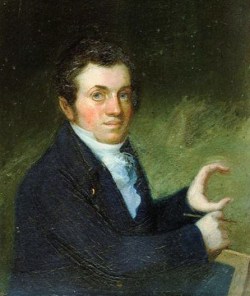 Laurent Clerc – Laurent Clerc played a significant part in the history of American Sign Language and in Deaf history. Clerc was born on December 26, 1785 in La Balme-les-Grottes, Isère, a village on the northeastern edge of Lyon to Joseph-François Clerc and Marie-Élisabeth Candy in the small village of La Balme, where his father was the mayor. He was born hearing, but when he was one year old, he fell from a chair into a fire. As a result, he lost both his hearing and his sense of smell, and he suffered from a severe burn and obtained a permanent scar on the right side of his cheek. Clerc’s family believed that his deafness and lost of smell was from the fire; however, Clerc believed it was from birth. His sign name was based on the scar, which is performed with the manual alphabet for “U”, stroked twice downward on the right cheek.
Laurent Clerc – Laurent Clerc played a significant part in the history of American Sign Language and in Deaf history. Clerc was born on December 26, 1785 in La Balme-les-Grottes, Isère, a village on the northeastern edge of Lyon to Joseph-François Clerc and Marie-Élisabeth Candy in the small village of La Balme, where his father was the mayor. He was born hearing, but when he was one year old, he fell from a chair into a fire. As a result, he lost both his hearing and his sense of smell, and he suffered from a severe burn and obtained a permanent scar on the right side of his cheek. Clerc’s family believed that his deafness and lost of smell was from the fire; however, Clerc believed it was from birth. His sign name was based on the scar, which is performed with the manual alphabet for “U”, stroked twice downward on the right cheek.
At the age of 12, Laurent entered the Royal Institution for the Deaf in Paris where he excelled in his studies. After he graduated, the school asked him to stay on as an assistant teacher. He was a dedicated teacher; and he was promoted to teach the highest class.
Meanwhile, in America, Thomas Hopkins Gallaudet was studying to be a minister when he met a young deaf girl, Alice Cogswell. Since there werre no school for the deaf in America, that is when Gallaudet decided to travel to Europe to seek ideas on how to teach deaf people. While he was there, he met a French educator of the deaf who invited him to go to Paris to spend three months learning at the Royal Institution for the Deaf, the school where Laurent Clerc was teaching.
Gallaudet accepted the offer, and went to the Royal Institution for the Deaf, where Clerc became his Sign Language teacher. The two worked and studied well together. When the time came for Gallaudet to return to America, he asked Clerc to come with him. Clerc accepted on one condition: that he would stay in America only a short time.
The two men set sail on June 18, 1816. The voyage across the Atlantic Ocean took 52 days; however, Clerc and Gallaudet put the time to good use. Clerc studied English, and Gallaudet studied sign language. They discussed the school for the deaf which they planned to open. On the long trip, they had many conversations about education and deafness. The year after they arrived, they founded a school for the deaf in Harford, Connecticut. 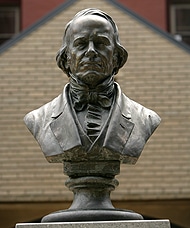
At the school, Clerc led a busy life. He taught signs to Principal Gallaudet; he taught the pupils; and he taught hearing men who came to the school to study deaf education. At that time, the state would only pay for each student to stay at the school for five years. Therefore, Clerc had to teach his pupils as much as he could as quickly as possible. He and Gallaudet also assisted in founding other schools for the deaf.
Laurent Clerc was the first deaf person to stand before Congress and the first deaf person to stand before the President of the United States. Once, Clerc came to Washington, D.C. because he was asked to appear before the Congress of the United States. He met President James Monroe, who became interested in Sign Language when he observed Clerc signing.
In 1819, Clerc married Eliza Crocker Boardman, one of his pupils. They had six children. He retired from teaching in 1858. Although he had intended to return to France, he never did. He died on July 18, 1869 in the United States. One of the best impressions Clerc has left in the history of sign language is that 58% of American Sign Language can be attributed to his teachings and he was a French teacher called “The Apostle of the Deaf in America”.
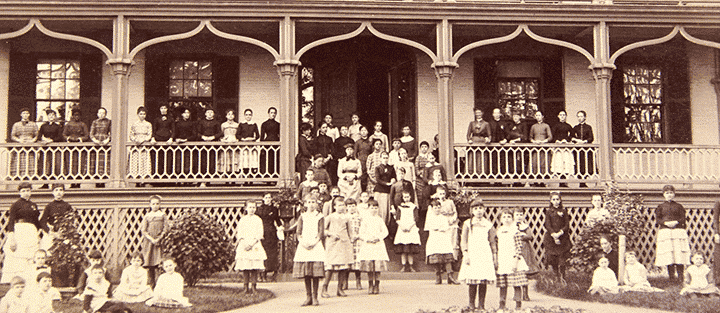
Today’s ASL was strongly influenced by Deaf students who graduated from American School for the Deaf, who passed down the sign language and Deaf cultural experiences. Furthermore, ASL became one of the most used languages in the United States.
References:
https://www.gallaudet.edu/about/history-and-traditions/thomas-hopkins-gallaudet/
https://biography.yourdictionary.com/thomas-hopkins-gallaudet
https://www.gallaudet.edu/about/history-and-traditions/the-legacy-begins/
https://www.lifeprint.com/asl101/topics/alice-cogswell.htm
https://www.startasl.com/alice-cogswell
https://www.startasl.com/laurent-clerc
https://en.wikipedia.org/wiki/Laurent_Clerc
Start Learning ASL Today!
 Ready to start learning real American Sign Language and not just basic signs? Do you want to be a part of the vibrant Deaf community? Check out our Free ASL 1 Course or our Complete 4-Level ASL Course options and start learning ASL today!
Ready to start learning real American Sign Language and not just basic signs? Do you want to be a part of the vibrant Deaf community? Check out our Free ASL 1 Course or our Complete 4-Level ASL Course options and start learning ASL today!









One Response
Thank you for posting this, I needed it for a research report and it was super helpful. I want to let you know to keep up the good work.